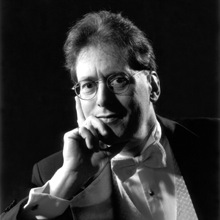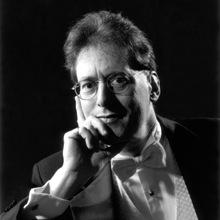
Robert Levin is a leading keyboard artist, performing on the harpsichord, the fortepiano, and the standard pianoforte. He is active in early music and historically informed performance, most notably for his expertise in the works of Mozart. His improvisational skills in this idiom are legendary — an approach not many dare to take, yet one he considers essential to the interpretation of this music. A scholar and pedagogue, Levin has held positions at the American Conservatory in Fontainebleau, France; the Freiburg Staatliche Hochschule für Musik; and the Curtis Institute; and is currently a professor at Harvard University. This September 24-29, together with the Philharmonia Baroque Orchestra, he unveils his reconstructed fragments of the young Wolfgang’s writing, never before performed in the U.S.
Tell us about these Mozart fragments. Were they just discovered?
These two — one page of a prelude for solo piano, and a movement of a concerto marked Molto allegro (both in the key of G major) — were already included in what’s called the Nannerl Book published in the New Mozart Edition [Amadeus Mozart: Neue Ausgabe sämtlicher Werke] some 25 years ago. They just did not have an author ascribed to them. The Nannerl Book was a collection written in Leopold Mozart’s hand to teach his children, Nan and Wolfgang, to play the keyboard.
Featured Video
Mozart: Piano Concerto No.23 III Allegro assai
What leads you to believe the music was written by Mozart?
Ulrich Leisinger, the director of research at the International Mozarteum Foundation, noted, among other anecdotal evidence of the time, that this concerto movement is very difficult to play, full of awkward leaps and things not idiomatic to the keyboard. Since the purpose of the anthology was to teach his children to play, Leopold would have no reason to include a piece that was so difficult and awkward. He himself was experienced enough to write virtuoso music that was playable. Mozart was 7 or 8 at the time. If you entertain the possibility that the young boy is trying to write a piece that’s difficult and sometimes writes awkward things, that makes a lot of sense. It’s not that we can say with authority that this is definitely music by Mozart; it’s just that it is the most logical conclusion.
Did you have to modify it to make it playable?
Dr. Leisinger had called a press conference in Salzburg last August to reveal the nature of his findings. He asked me to construct the orchestra part to the concerto, and I also wrote the second half to the prelude, which was then performed at the press conference. This is what I’ll perform in San Francisco.
What is the value of performing a small fragment of a concerto?
As a keyboard player, it’s fun and challenging since it is very difficult to play. But it’s really a human-interest story for the audience. It’s not going to change anyone’s evaluation of Mozart as a composer, but it’s a cute little conversation piece. It serves as a nice example of his precocity at an age when most people are shooting marbles.
You will perform on the fortepiano, Mozart’s instrument, yet you also play the modern Steinway. Which do you prefer?
Both have turned out to be absolutely necessary. Living within the acoustic and expressive potential of the original instrument can reveal why the piece was written the way it was. Once you do that, the challenge is to carry it over to the modern instruments. I’m proud to be a Steinway artist — my wife and I own three Steinways, and we both [also] play period pianos, but we’d never give away our beloved Steinways. When you’re playing in a hall that has 2,000 people, you need it.
How did you learn to improvise?
When I studied with Hans Swarowsky, the legendary conductor in Vienna, at age 19, he remarked to me that anyone who wanted to play the Mozart piano concertos properly needed to improvise. I was thunderstruck! I didn’t know anyone who did that. My idols in the 1960s were Rudolf Serkin, Barenboim, Ashkenazy, Brendel, and they weren’t improvising. Hans suggested I listen to a duo recording of him and Friedrich Gulda, who also played jazz. I never heard anything like that at all — the improvising of embellishments and cadenzas, his rubato, and playing along in the tuttis. People thought either that he was out of his mind or that he was a visionary. I wanted to learn how to do that, so I taught myself.
Why don’t they teach classical improvisation in music conservatories today?
It certainly should be taught, and always was in the past. There are two things that have happened in the world of music that have been unfortunate. The first is a separation between art music and vernacular music; the second is a separation between those who compose music and those who perform it. We train reproducers now, not thinkers. It’s not healthy, and it’s one of the reasons classical music is in danger now. There is no sense of risk or suspense; everything has been so painstakingly worked out.
Do you teach these skills?
Today I’m beginning a seminar at Harvard in classical improvisation. I’ve never tried to teach this as a course in an academic setting. Some time ago, in Stuttgart, I incorporated improvisation and embellishment into a piano master-class on the Mozart piano concertos, and the students learned very quickly. Improvisation cannot be learned without a thorough grounding in musical language: ear training and music theory. Generations of musicians had this type of training at conservatory, but in recent decades that area of the curriculum has been progressively in doubt, to give people more time to practice in order to win competitions.

